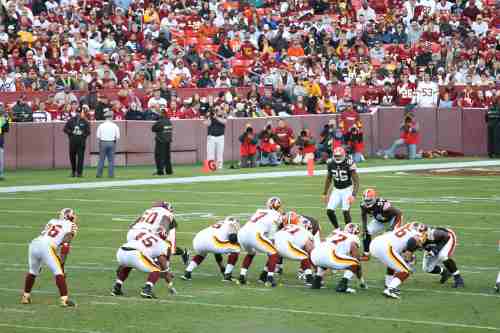If it’s the loser of a touchdown pass or an interception that can save the game, defensive backs (DBs) are a part of football’s most important games. In one scenario, the DB might be fighting a 6’4″ receiver for an overhand pass and, on the next play, chase a running back across the field. However, before we go ahead, it is important to ask…
The game of American football DB stands for “defensive backs.” They are the backfield’s final line of defense that separates the offensive and scoring. Many defensive backs are athletic players that quickly become fans’ favorites due to their athleticism and their ability to play the game.
If you are a football fan or player trying to show your love for your favorite player or this charming sport. Custom metal pins may help you make something aesthetic and unique. These pins are definitely perfect for your football-related collections. You could use them to decorate your clothes, bags o rto boost morale of your team by giving them to every player.

Defensive Backs In American Football
The term DB In American Football is short for defensive backs. They are typically the most efficient football players who play on the defense because they cover wide receivers.
They are also known as defensive backs since they often play the defense’s last line at their backs.
Positions are typically grouped in American football because managing the players in a group is easier than individual positions.
For example, instead of saying each offensive line player, it’s better to use the term “D-Line. Instead of naming every kind of linebacker, it’s much more simple to say “the linebackers simply.”
What are the Defensive Positions on the Field?
If a football team plays in the defense, they usually possess a handful of crucial positions that protect the field. These positions include defensive linemen and defensive ends who line their line of scrimmage linebackers, who sit in front of the line of scrimmage, and defensive backs with more flexibility in their positions. These positions offer a variety of defensive layers between the offense and the zone of the end.
What Do Defensive Backs Do?
Defensive backs are athletes with various skills with a range of responsibilities during a game. DBS may be required to play man defense, zone coverage, or blitz based on the call to play.
In man coverage in man coverage, a DB has to defend an offensive player. In most cases, DBs defend wide receivers, but they also are assigned to protect running backs or tight ends. If their opponent is running or catches the ball, a DB must stay on top. They should be ready to stop passes or even tackle their opponents even if they’ve been able to catch the ball.
In zone coverage, the DB must guard a certain space – or “zone” located on the field. When a quarterback throws an object close to their zone, the DB must be in a position to block or intercept the ball. If a ball-carrier can break away from their zone, the DB is responsible for making the tackle.
Safety
A safety position can be different from that within the defensive backs’ position group. Backs. This definition includes two kinds of safety: free safety and stringent safety.

Free safeties are those that you’ll see beginning the game deep into the defensive backfield. They serve as a security valve for deep passes, and they are designed to prevent other defenders from being beaten by the ball.
A strong safety plays a role in pass coverage, even though they are most well-known for their running-stopping. The safety will be close to the line of scrimmage they are in pass coverage, and they primarily protect tight ends and running backs.
What do Cornerbacks Do in Football?
The primary role of a cornerback is to protect the opposing wide receivers. When passing plays are played, cornerbacks attempt to stop receivers from taking passes. If they’re well protected from the beginning, the wide receiver may not even see the ball at him. If the cornerback cannot stop a ball and cannot block it, he’ll attempt to throw the ball away or block the receiver.
Suppose the cornerback’s role shifts when the offense is calling an offensive run play. The primary goal is to stop the ball from moving forward, so the emphasis shifts from defending receivers to tackling players. If the receiver takes an attacking stance following the snap, it is a sign that a run is being planned. The cornerback has to discover a way of getting over the receiver.
In some instances, play plays continue to have receivers running routes to draw players away from the scrimmage line. If this occurs, cornerbacks must be attentive to the receiver who has finished his route or turning to block the downfield.
Best Defensive Backs in NFL History
Excellent defensive backs can keep up with the fastest runners, jump with the biggest receivers, and take advantage of poor-thrown passes. The best defensive backs are so great that quarterbacks fear throwing their arrows at them! Because of this, defensive back Deion Sanders is among the best defensive backs in NFL time.
Sanders’s play led to a brand new archetype of defensive backs: “the shutdown corner. Sanders was regarded as a shutdown corner due to his proficient that the player “shut down” his half on the field. Quarterbacks would not throw to players who Sanders was playing.